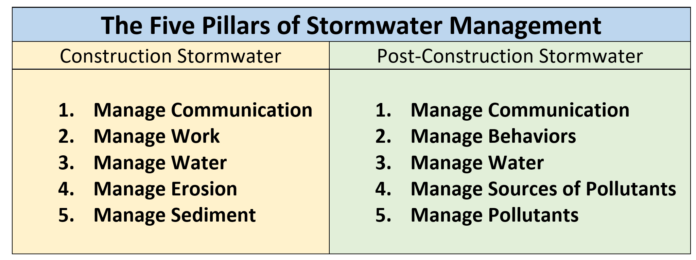Saying, “I’m sorry” is the same as saying, “I apologize” … Except at a funeral.
— Demetri Martin.
Comedian Demitri Martin is highlighting the fact that our words matter. In fact, our words — the ones we choose, and how we say them, can significantly influence the effectiveness of our stormwater management efforts.
We have plenty of words at our disposal, many of which convey confidence, mastery and even perfection. Words like erosion CONTROL, sediment CONTROL, BEST management practice, MAXIMUM extent PRACTICABLE (a word we can’t even correctly pronounce some days).
Having lots of words, and even using those words correctly does not equal effective stormwater management or water quality protection. Most stormwater-related issues can be tracked back to a single practice that we haven’t quite mastered yet — communication.
We all know our work is much more challenging than the certainty and absoluteness that our terminology may imply. We know that most stormwater management variables are, in fact, beyond our control. We don’t control when it rains or how hard or how much. We don’t control the environment or amount of space we must work in, and we typically don’t control our budgets.
As challenging as these variables may seem, the most difficult aspect of stormwater management involves people — another critical element you don’t get to control. You don’t control your contractors, your neighbors, your employees or your coworkers.
Only a few things are under your control. In addition to setting your values, goals for excellence and vision for how you will be perceived as a professional, you choose how you influence others and how you communicate.
Let’s assume you have decided to be a stormwater professional whose effectiveness is reflected in the projects and programs you serve. As a professional, your lack of control can be overcome by your influence. Leadership author, Dr. John Maxwell says, “Leadership is influence — nothing more, nothing less.” We know that effective influence requires effective communication — your words, your tone, your actions, your example and your empathy.
There is often a tendency to focus on the symptoms of potential and actual stormwater issues — the pollutant. Managing pollutants, primarily sediment in construction settings, is relatively easy to conceptualize in a technical sense. It’s harder to pull off in the real world. Especially if the sources, causes and behaviors associated with pollution are not also being addressed.
The Five Pillars of Stormwater Management (Figure 1) is a concept and framework for stormwater management that emphasizes the practice of communication to influence and lead others. The Five Pillars approach was developed initially for managing construction stormwater but has since been adapted for municipal applications.
In most environments there is no end-of-pipe solution that can withstand the magnitude of pollutant loading when the pillars listed above them have not first been addressed, including communication.
Communication is the key pillar. It is THE best management practice. Communication often becomes mandatory once all the other pillars fail, and it becomes clear that no one is truly in control of the runoff, project or program. It makes good sense (and cents) to start with communication and to return to it as often as necessary.
Managing communication requires written or verbal interaction and operational systems and behaviors to effectively convey regulatory, contractual and programmatic requirements and policies.
Specific construction-related communications measures and practices are:
- Policy, procedures and documentation.
- Contract documents.
- Design and construction guidance.
- Design review coordination.
- Construction stormwater permit coverage.
- Stormwater permit application and notices.
- Stormwater pollution prevention plan.
- Compliance verification and reporting.
- Stormwater commitment tracking.
- Environmental inspections.
- Environmental oversight inspections.
- Environmental commitment awareness.
- Environmental submittals.
- Preconstruction meetings.
- Environmental training and credentialing.
Effective communication happens when an intended message is received by the intended audience. The qualifier “intended” is extremely important. There is responsibility on both the sender and receiver achieve effective communication.
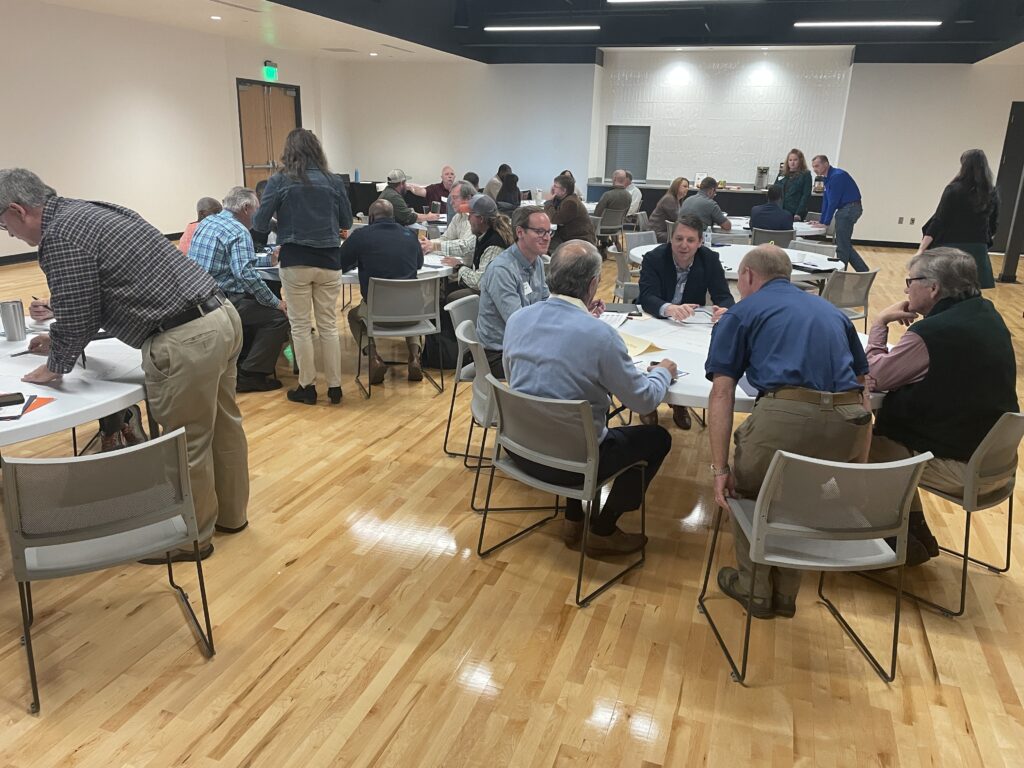
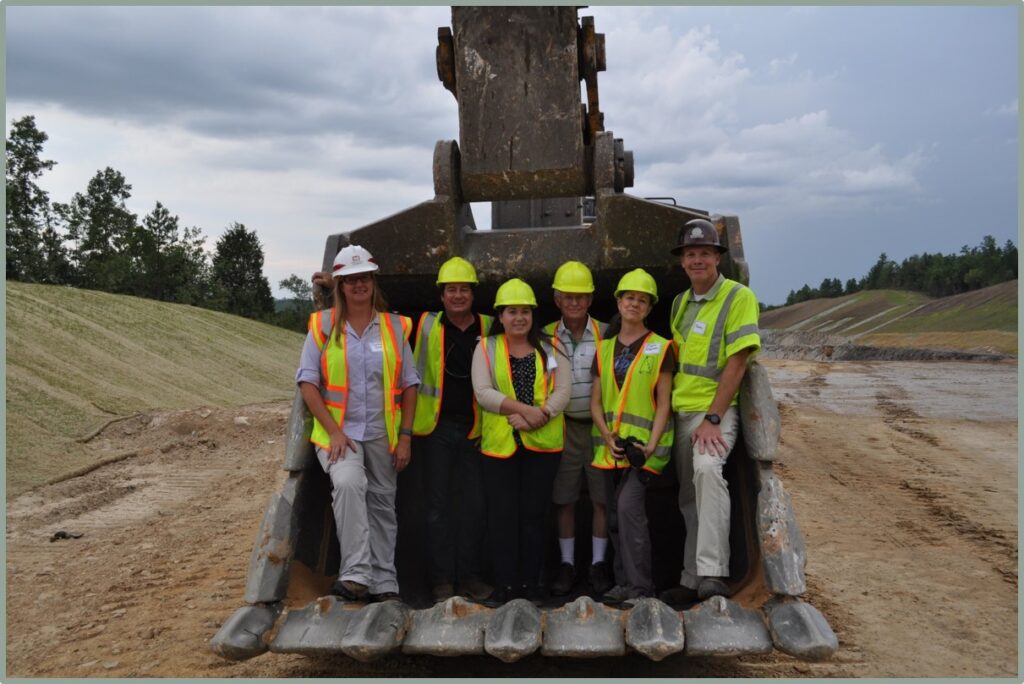
Stormwater professionals often see themselves in the role of message sender, and in many cases they are. However, most could benefit from a greater awareness of when listening might be beneficial or required. Better yet, an intentional default to the listener role could help the entire profession as we attempt to truly understand the perspectives of those we serve and lead.
When speaking, our job is to talk in a manner that we can be understood. This includes actively working to understand the desires, interests and limitations of our audience — listening before we speak. If we are truly effective, the behavior of our listener will change in some way, not as the result of manipulation, but as the result of recognized demonstrated empathy and respect and an obvious desire for collaboration.
It is also important to remember that communication is a two-way process. When receiving a text or email, confirm that the message was received and ask questions to clarify information or to let the sender know you understand. When speaking, and in written communications, restate the idea, instructions or questions back to the other person to ensure that you both interpret the message in the same way.
The information and the language a stormwater professional uses should be adapted to the audience, and we want to talk with as many different audiences as possible. These audiences and opportunities to communicate our vision include:
- Municipal leaders in formal meetings and workshops (Figure 2).
- Community outreach groups in project visits and updates (Figure 3).
- Contractors at preconstruction meetings (Figure 4).
- On-site contractors and inspection staff at “tailgate talks” (Figure 5).
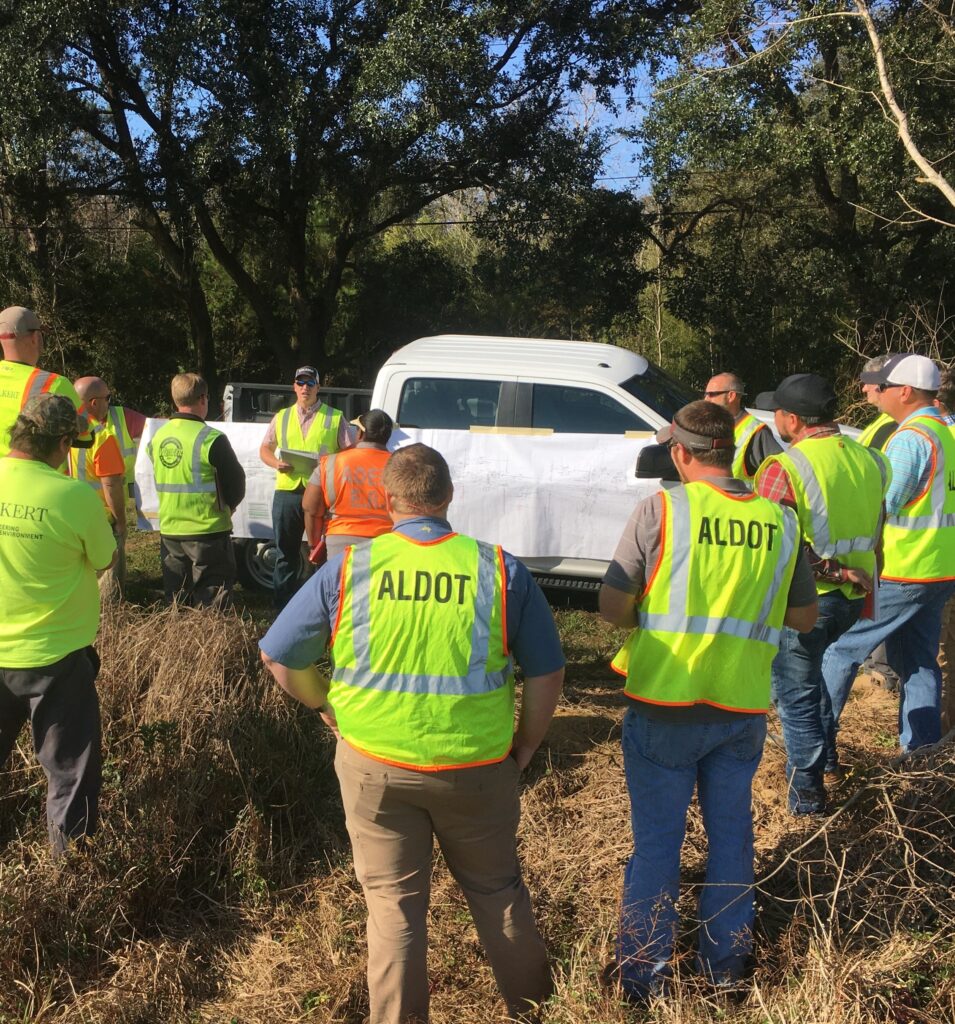
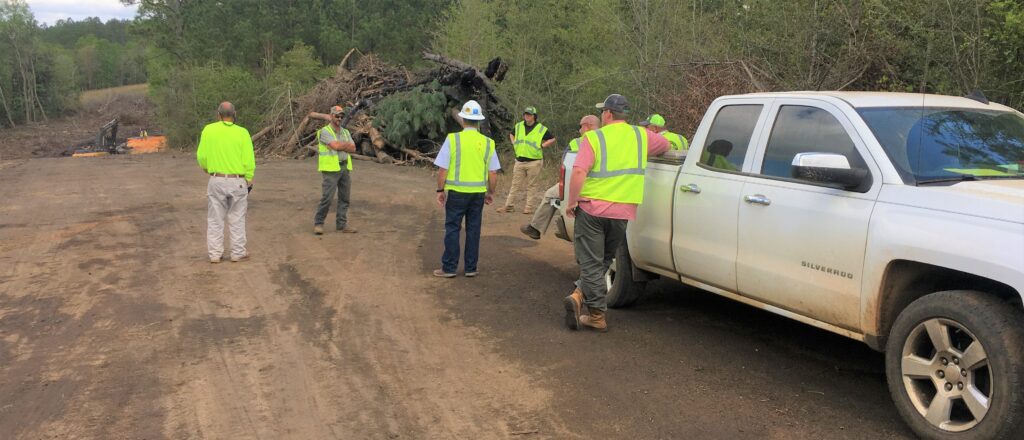
Effective communication also requires consistency in delivering simplified, actionable messaging based on principles of effective stormwater management. Author and pastor Andy Stanley emphasized the importance of making your vision, or message, memorable and portable so people can carry it with them when you’re not there. The Five Pillars approach is a catchy summary of a complex concept. A few other stormwater-related examples of memorable and portable messages are provided below.
- “Green, gray or purple — it’s all infrastructure.” Conveys the hope that one day we will simply apply the most effective practices for stormwater management, without having to distinguish between nature-based and built stormwater infrastructure.
- “Water is dumb. We get to tell it where to go and how fast to get there.” A recognition that we have the ability to alter the direction, peak discharge, velocity and volume of runoff — in both positive and negative ways.
- “Clean water in, clean water out.” A reminder to construct enclosed conveyances, culverts and cross drains as a first order of work so that flow-through waters are separated and protected from construction site runoff.
- “Green is good.” A mantra used to encourage vegetation preservation and establishment on construction sites.
- “You don’t have to care about the environment. You just have to act like you do.” Conveys an expectation of environmental stewardship to employees and contractors.
- “We can’t hope to influence people that we aren’t willing to hang out with.” A direction to commune and communicate with others to effectively lead them.
Some of us serve in traditional leadership roles. Others are working in positions where we don’t feel like we have a voice. Regardless of our title, we all have a circle of influence, and we all have a responsibility to lead from where we sit. We simply cannot do that without effectively communicating. Communication, after all, is THE best management practice.
About the Expert
Barry Fagan, PE/PLS, ENV SP, CPESC, CPMSM, is an owner and vice president of Fagan Consulting LLC.



